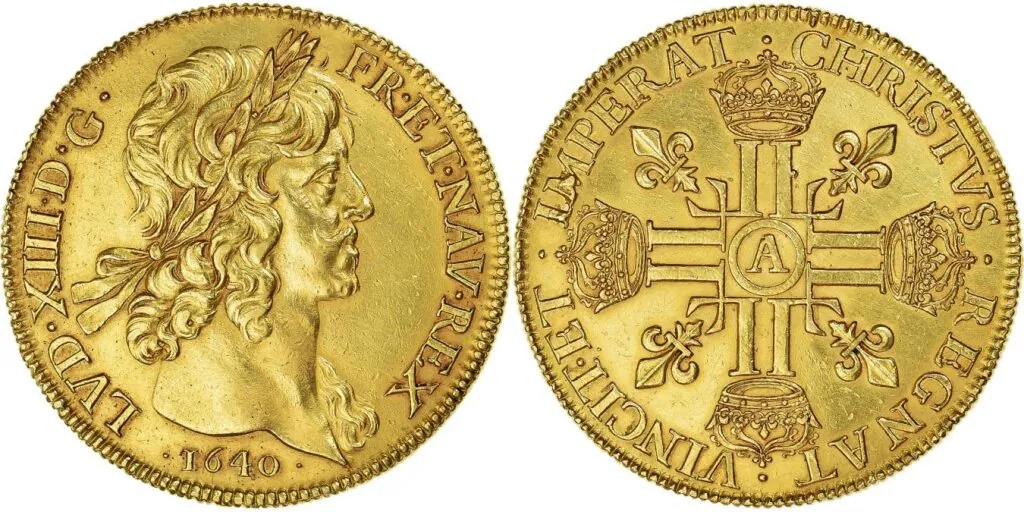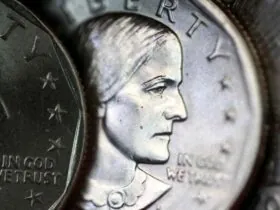European coins have played a pivotal role in shaping the economic and cultural landscapes of the continent. Their history, which stretches back to the Roman Empire, reveals not just their use as currency but also their symbolic representation of power, authority, and artistry. Today, these coins continue to captivate collectors and historians alike, with some commanding astronomical prices at auctions due to their rarity and unique characteristics. This article delves into the fascinating world of European coins, highlighting their historical significance and introducing some of the rarest and most valuable specimens.
The Evolution of European Coinage
This Article Includes [hide]
- 1 The Evolution of European Coinage
- 2 Categories of Rare and Valuable Coins
- 3 8 Exceptional European Coins and Their Stories
- 3.1 1. French 20 Euro Cents Reverse Mule
- 3.2 2. Vatican Euro Coin Mule
- 3.3 3. Royal d’Or de Noyon (1270)
- 3.4 4. Louis XIV 15 Sols (1670)
- 3.5 5. Amadeo I Gold Specimen 100 Pesetas (1871)
- 3.6 6. Louis XIII 10 Louis d’Or (1640)
- 3.7 7. Charles II Silver Pattern ‘Petition’ Crown (1663)
- 3.8 8. William IV 5-Pound Coin (1831)
- 4 Conclusion
Ancient Beginnings
The origins of European coins can be traced to ancient Rome, where they served dual purposes: facilitating trade and showcasing the might of the empire. The designs often depicted emperors, gods, and significant military victories, underscoring their role as tools of propaganda.
The Medieval Shift
Large-scale coin production became commonplace during the early medieval period, marking a significant transition in Europe’s economic systems. Silver coins emerged as the standard for trade, reflecting the growing importance of precious metals in stabilizing economies. This period also saw the rise of regional minting practices, with coins becoming symbols of local authority and craftsmanship.
Categories of Rare and Valuable Coins
Minting Errors: The Fascination with Mules
Minting errors, such as “mules,” hold a special place in the hearts of collectors. Mules occur when mismatched dies are used during production, resulting in coins with unintended designs. These mistakes, though rare due to stringent quality controls, are highly prized for their uniqueness and the insight they provide into the complexities of minting processes.
Pattern Coins: Prototypes of Perfection
Pattern coins, created as prototypes to test new designs, were never intended for public circulation. Their limited production and exquisite craftsmanship make them some of the most coveted pieces in numismatics. Often, these coins represent artistic and technical experimentation, adding to their allure.
8 Exceptional European Coins and Their Stories
1. French 20 Euro Cents Reverse Mule

- Estimated Value: $1,265
- Unique Feature: Both sides feature the reverse design.
- Significance: This coin exemplifies a classic minting error. Instead of the standard obverse and reverse sides, both display the reverse design, making it a rare and intriguing find for collectors.
2. Vatican Euro Coin Mule

- Estimated Value: $2,875
- Unique Feature: Two mismatched reverse designs.
- Significance: This coin features the reverse designs of a 20-cent and a 50-cent Euro coin. Such errors highlight the challenges of maintaining consistency in large-scale minting.
3. Royal d’Or de Noyon (1270)

- Estimated Value: $60,000
- Unique Feature: Crown of thorns design; only six known specimens.
- Significance: Associated with Louis IX, this medieval coin is a rare artifact with deep historical and religious connotations, adding immense value to its numismatic appeal.
4. Louis XIV 15 Sols (1670)

- Estimated Value: $132,000
- Unique Feature: Minted for New World colonies; very few survive.
- Significance: Produced during France’s colonial expansion, this coin’s scarcity and historical context make it a valuable piece of history.
5. Amadeo I Gold Specimen 100 Pesetas (1871)

- Estimated Value: $240,000
- Unique Feature: Limited production during Amadeo I’s short reign.
- Significance: This coin’s rarity stems from the brevity of Amadeo I’s reign. Its association with a turbulent period in Spanish history enhances its desirability.
6. Louis XIII 10 Louis d’Or (1640)

- Estimated Value: $456,000
- Unique Feature: Largest denomination in France.
- Significance: Weighing nearly 67 grams, this coin is both a physical and historical marvel, representing the pinnacle of French numismatic craftsmanship.
7. Charles II Silver Pattern ‘Petition’ Crown (1663)

- Estimated Value: $960,000
- Unique Feature: Intricate engravings by Thomas Simon; fewer than 20 exist.
- Significance: Created as a masterpiece of design to impress the monarchy, this coin is revered for its artistic brilliance and rarity.
8. William IV 5-Pound Coin (1831)

- Estimated Value: $1.148 million
- Unique Feature: Extraordinary engraving; only 6-10 specimens exist.
- Significance: Renowned for its detailed artistry, this coin stands out as one of the most exquisite creations in British numismatics.
Conclusion
European coins embody centuries of history, artistry, and economic evolution. From ancient Roman denarii to medieval masterpieces and modern minting errors, these coins tell stories of empires, monarchies, and craftsmanship. Whether a collector seeks the intrigue of minting mistakes or the grandeur of pattern coins, the diversity and rarity of European coins ensure their place as treasured artifacts in the world of numismatics.
Also Read:
THIS IS ONLY A BLOG POST FOR INFORMATION – WE DO NOT BUY, SELL, OR APPRAISE THESE ITEMS







Leave a Reply